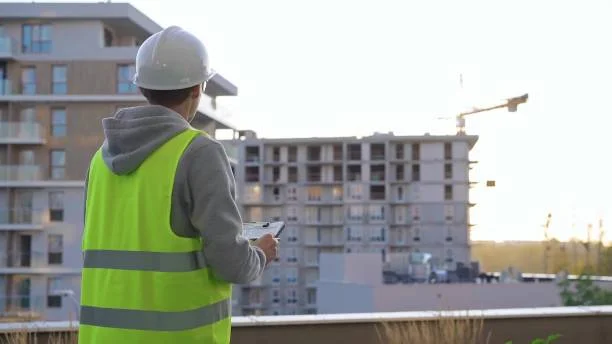In today’s fast-paced construction landscape, developers, contractors, and property owners are constantly seeking ways to optimize project timelines, maintain high-quality standards, and reduce bureaucratic bottlenecks says Specialized Property Management Houston. One emerging solution to these challenges is the use of Private Provider Inspections—a system that allows qualified private entities to conduct building inspections and plan reviews traditionally performed by public agencies.
This alternative model has gained traction in recent years due to its ability to streamline processes and deliver faster, more responsive service, all while maintaining compliance with building codes and safety standards. In this article, we will explore the concept of private provider inspections in depth, discuss their benefits and limitations, and provide insights into how they are shaping the future of construction oversight.
What Are Private Provider Inspections?
Private provider inspections involve licensed third-party professionals—such as engineers, architects, or certified inspectors—performing code compliance inspections on construction projects. These inspections typically take place in jurisdictions that allow or encourage private sector involvement in building oversight.
Unlike traditional inspections conducted solely by local building departments, this system delegates inspection responsibilities to external providers, while retaining government authority for final approvals, permitting, and enforcement. The private provider must meet strict qualifications and submit appropriate documentation to the local authority before beginning work.
Why the Shift Toward Private Providers?
The traditional permitting and inspection system, while essential for ensuring safety and code compliance, is often plagued by delays, staffing shortages, and administrative complexity. These issues can lead to missed deadlines, increased construction costs, and frustration among stakeholders. In contrast, private provider inspections offer several advantages that make them an appealing alternative:
- Speed: Inspections can often be scheduled and completed more quickly than through municipal channels.
- Efficiency: Projects can avoid delays caused by backlogged public inspectors or limited office hours.
- Expertise: Private providers are often highly specialized, offering a depth of knowledge and attention to detail.
- Flexibility: Developers can select providers who understand their specific project needs and timelines.
As construction demands increase and regulatory environments become more complex, the appeal of private provider inspections lies in their ability to keep projects moving forward without compromising safety or compliance.
How the Process Works
While procedures vary depending on jurisdiction, the general steps involved in engaging a private provider for inspections typically include:
1. Provider Selection
Developers choose a licensed private provider who meets the jurisdiction’s regulatory requirements. This provider could be an individual or a firm with a team of inspectors and plan reviewers.
2. Notification and Documentation
The selected provider must notify the local building department of their involvement. This includes submitting a formal notice of intent, licensing credentials, proof of insurance, and an outline of the inspection plan.
3. Plan Review (if applicable)
Some private providers also conduct plan reviews to ensure the proposed construction complies with applicable building codes before construction begins.
4. Inspections During Construction
The provider conducts inspections at critical points during the project—such as foundation, framing, electrical, mechanical, plumbing, and final inspection—to ensure code compliance.
5. Reporting and Coordination
Inspection reports are submitted to the local building department for review and recordkeeping. In most cases, the private provider also coordinates closely with the general contractor and project team to address any deficiencies.
6. Final Approval
While private providers perform the inspections, only the local authority has the power to issue the final Certificate of Occupancy or Completion based on the documentation provided.
Benefits of Private Provider Inspections
Engaging private providers for inspections offers a wide range of benefits across various stages of a construction project. These include:
1. Reduced Project Delays
Municipal inspection teams are often overwhelmed, leading to scheduling delays. Private providers typically offer faster response times, helping projects maintain their timelines and reduce costly idle periods.
2. Enhanced Technical Expertise
Many private inspectors have extensive field experience and specialized knowledge. Their involvement often results in more thorough inspections and a deeper understanding of the project’s unique challenges.
3. Greater Accountability
Private providers operate in a competitive environment where reputation matters. This often translates to higher service quality, attention to detail, and responsiveness to client needs.
4. Improved Communication
Private inspectors are typically more accessible than public officials, allowing for more fluid and direct communication between the inspector, contractor, and design team.
5. Increased Flexibility
Private providers can tailor their services to the project’s specific needs, offering evening or weekend inspections, phased approvals, and close coordination with project milestones.
You might also like: A fresh take that complements what you just read.
Challenges and Considerations
Despite their many advantages, private provider inspections are not without challenges. Stakeholders must carefully consider the following factors:
1. Regulatory Oversight
The local building department retains ultimate authority, and not all jurisdictions allow or support private inspections. Understanding local laws is essential before pursuing this route.
2. Cost Factors
Private provider services come with direct costs, which must be factored into the overall project budget. However, these costs can be offset by the savings from reduced delays and increased efficiency.
3. Legal Liability
Private providers must carry professional liability insurance, but the developer or contractor is still ultimately responsible for compliance. Choosing a qualified, reputable provider is critical.
4. Documentation Requirements
Thorough documentation is a must. Improper or incomplete reports can lead to delays in final approval, so working with experienced providers who understand municipal requirements is vital.
When Are Private Provider Inspections Most Beneficial?
While all types of construction projects can benefit from third-party inspections, they are especially useful in scenarios such as:
- Large Commercial or Industrial Projects: These projects often require frequent inspections and tight coordination, making speed and flexibility crucial.
- High-End Residential Developments: Luxury and custom homes demand specialized inspections and precise scheduling that private providers can deliver.
- Fast-Track Construction: When timelines are aggressive, avoiding bureaucratic delays can make the difference between a profitable venture and a missed opportunity.
- Remote or Underserved Areas: Where local inspection departments are limited, private providers can step in to ensure progress and compliance.
The Role of Technology in Private Inspections
Modern private inspection firms often leverage digital tools to enhance service delivery. These tools include:
- Cloud-Based Reporting: Inspection results are uploaded in real-time, accessible to project teams and regulators.
- Mobile Applications: Inspectors use tablets or smartphones to conduct on-site inspections, reducing paperwork and streamlining communication.
- Remote Inspections: In some cases, inspections may be conducted via video conferencing or recorded walkthroughs, particularly for re-inspections or minor changes.
These innovations allow private provider inspections to integrate seamlessly into today’s construction management platforms, improving both speed and accuracy.
Regulatory Landscape and Legal Framework
The legal authority for private provider inspections is typically granted through state or local legislation. These laws define who can serve as a provider, what qualifications are required, what insurance coverage is necessary, and how oversight is maintained.
To ensure uniformity and accountability, many jurisdictions require private providers to:
- Be licensed by the state or a relevant regulatory board
- Maintain professional and general liability insurance
- Adhere to standard codes and procedures
- Submit inspection reports in standardized formats
- Cooperate fully with government reviews and audits
It’s essential for developers and contractors to understand these legal parameters before engaging a private provider, ensuring that their project remains compliant at every stage.
Conclusion
The use of private provider inspections is a game-changing development in the construction industry—offering speed, flexibility, and specialized expertise to meet the demands of modern building projects. By allowing qualified third parties to handle plan reviews and inspections, stakeholders can enjoy greater control over timelines, fewer costly delays, and improved communication throughout the construction process.
However, as with any professional service, success depends on choosing the right partner, understanding local regulations, and maintaining a strong commitment to code compliance. When implemented correctly, private provider inspections can significantly enhance the overall quality, safety, and efficiency of construction projects across a wide range of sectors.
As construction continues to evolve, so too must the systems that support it. With the continued growth of public-private collaboration, the rise of technology-driven inspections, and a focus on transparency and accountability, Private Provider Inspections are poised to become a permanent and valuable component of the building industry.
If you enjoyed this post, you’ll love what’s featured on Management Works Media.






